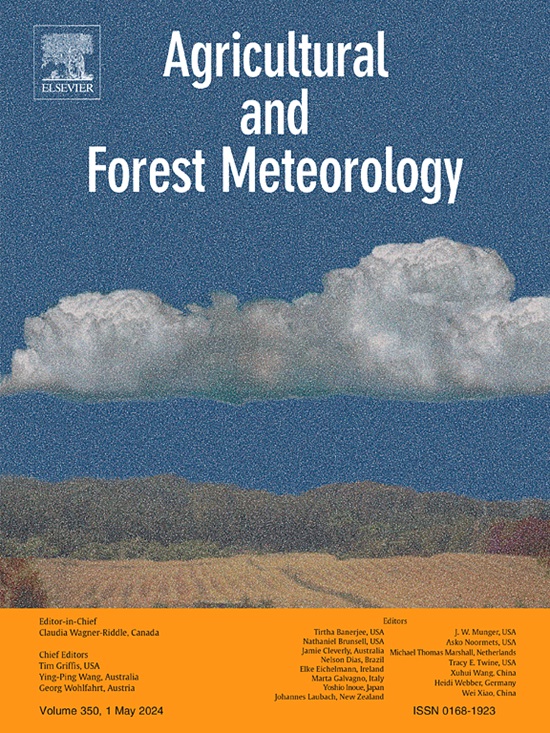Historical trends and future projections of compound cloudy-rainy events during the global winter wheat harvest phase
IF 5.6
1区 农林科学
Q1 AGRONOMY
引用次数: 0
Abstract
Compound cloudy-rainy events (CCREs), characterized by prolonged rainfall and extensive cloud cover, when occurring during the harvest phase, could adversely affect the drying, harvesting, and transportation of mature grains, and even lead to grain mold and sprouting. However, existing studies have focused more on the growth phases, while trends in CCREs during the harvest phase have been largely undocumented. Here we investigated the spatial-temporal variations of CCREs during the harvest phase of winter wheat globally for the historical (1985–2022) and future (2015–2074) periods. Our results reveal a significant decrease in CCREs during the winter wheat harvest phase on a global scale across the two periods. Spatially, reduced cloudy-rainy days cover about 60 % of the winter wheat-producing area. Additionally, the trend patterns of CCREs exhibit considerable spatial heterogeneity. Specifically, pronounced increases are primarily located in eastern North America, western Europe, and eastern Asia, where agricultural mechanization levels are higher. Meanwhile, the asynchronous trends between cloudy days and rainy days lead to spatial variability in the underlying causes of the observed increases in CCREs across these regions. Overall, the results of this study provide novel insights into agricultural climate mitigation and adaptation for global food security.
全球冬小麦收获期云雨复合事件的历史趋势及未来预测
复合云雨事件(CCREs)以降雨时间长、云层覆盖范围广为特征,发生在收获期,会对成熟谷物的干燥、收获和运输产生不利影响,甚至导致谷物发霉和发芽。然而,现有的研究更多地集中在生长阶段,而收获阶段的CCREs趋势在很大程度上没有记录。研究了历史时期(1985-2022年)和未来时期(2015-2074年)全球冬小麦收获期CCREs的时空变化特征。我们的研究结果显示,在全球范围内,冬小麦收获阶段的CCREs在这两个时期显著下降。从空间上看,阴雨天减少的面积约占冬小麦产区面积的60%。此外,CCREs的趋势格局表现出相当大的空间异质性。具体而言,显著的增长主要集中在农业机械化水平较高的北美东部、西欧和东亚。与此同时,阴雨天气的非同步趋势导致了这些地区CCREs增加的潜在原因的空间变异。总体而言,本研究的结果为农业气候减缓和适应全球粮食安全提供了新的见解。
本文章由计算机程序翻译,如有差异,请以英文原文为准。
求助全文
约1分钟内获得全文
求助全文
来源期刊
CiteScore
10.30
自引率
9.70%
发文量
415
审稿时长
69 days
期刊介绍:
Agricultural and Forest Meteorology is an international journal for the publication of original articles and reviews on the inter-relationship between meteorology, agriculture, forestry, and natural ecosystems. Emphasis is on basic and applied scientific research relevant to practical problems in the field of plant and soil sciences, ecology and biogeochemistry as affected by weather as well as climate variability and change. Theoretical models should be tested against experimental data. Articles must appeal to an international audience. Special issues devoted to single topics are also published.
Typical topics include canopy micrometeorology (e.g. canopy radiation transfer, turbulence near the ground, evapotranspiration, energy balance, fluxes of trace gases), micrometeorological instrumentation (e.g., sensors for trace gases, flux measurement instruments, radiation measurement techniques), aerobiology (e.g. the dispersion of pollen, spores, insects and pesticides), biometeorology (e.g. the effect of weather and climate on plant distribution, crop yield, water-use efficiency, and plant phenology), forest-fire/weather interactions, and feedbacks from vegetation to weather and the climate system.

 求助内容:
求助内容: 应助结果提醒方式:
应助结果提醒方式:


